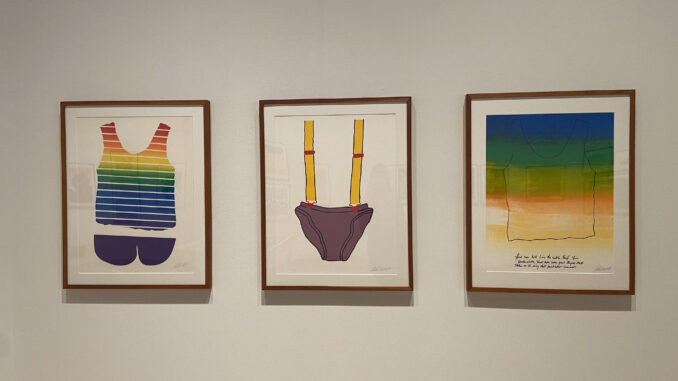
“I wanted to see if we could find some little corner of the world to live in, where we could live a life we imagined.”
This quote, by Kate Millet, is displayed on the wall next to the door when you walk into her new exhibit at the Dorsky. The late Kate Millet was many things, including a revolutionary, activist, farmer and artist. Now, SUNY New Paltz students have the incredibly lucky chance to view her art themselves. Millet’s “Life After the Revolution” exhibit opened at the Dorsky Sept. 11 and will run until Dec. 12 in the Morgan Anderson Gallery and Howard Greenberg Family Gallery. Millet and her partner Sophie Keir ran an all-women’s LGBTQ+ and feminist artist’s colony in Poughkeepsie; the colony was created with hopes of being like the world that would exist after the “revolution.”
Millet hoped to live life with her artists as if they were living in a world where the women’s and queer rights they fought for were already won. It was a space of community, art and freedom — where they could exist without the gaze and oppression of the outside world they escaped. The colony existed for over four decades. It operated just half an hour away from the museum where we now can see the art showcased.
The exhibit is a mixed media curation of Millet’s work that embodies the soul of her colony. There is also art from artists who were part of The Farm commune. There are statues inspired by the forest they resided in, as well as prints and photographs to capture what the colony was like. From the moment you walk into the door, you are face to face with a humanoid statue filled with tea cups. This piece, entitled “Bachelor’s Apartment,” is part of Millet’s “Fantasy Furniture” collection. Wood, fabric and acrylic paint combine to create surreal pieces that catch your eye from the moment you enter the exhibit. Millet’s work demands attention and keeps you engaged. Statues are accompanied by monoprints. Monoprints were sold to support The Farm. You will find a wall of three rainbow monoprints together, including “Rainbow Striped Tank Top,” the advertising art of the exhibit. Each piece shows Millet’s lens of the world and how she translated her heart into her work. Photographs of Millet and her artists are also featured in the gallery.
Above an entryway in the exhibit, you will find an enormous purple banner reading “Farm Dykes.” This banner was carried as they marched in the NY Pride Parade of 1986. When you discuss The Farm or the artists who were apart of it, this activism is essential to the conversation. Millet and her inspiring community of artists were ahead of their time in many ways. Farm work was required for at least five hours a day, with the rest of the day left for art work. The colony was made to be self-sustainable, and Millet purchased 73 acres of land. The crop they chose to grow as their specialty was as magical as the colony themselves: Christmas trees.
Also in the exhibit is a historical film about The Farm. This film adds another layer to the whimsicality and love that radiates from Millet’s work. In the film, we hear first hand what The Farm was like. The women discuss what it was like to be part of The Farm, the community they were grateful to have, and how much of a visionary Millet was.
Weekend Visitor Experience Manager Anna Churnland took the time to walk me through the exhibit. When asked why students should come see this visit, she said it was extremely inspiring.
“This needs to exist,” she said. “[The Farm] would be just as needed and important today as it was 30, 40 years ago.” Churnland could not pick a single favorite piece from the collection, saying that the exhibit is simply inspiring as a whole and an idea. Millet’s vision and her colony translates into each piece of art featured in the exhibit. The story, the work and the women are something worth seeing. The Kate Millet “Life After the Revolution” exhibit will run until December, so be sure to stop by to engage with a piece of history on our very own campus.

